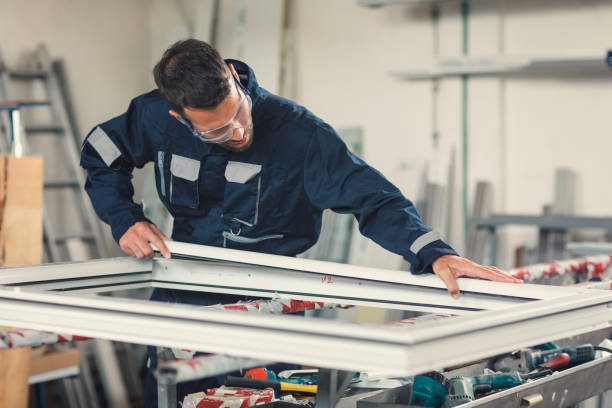Aluminium fabrication delhi is an essential part of many industries in Delhi, known for its versatility, durability, and cost-effectiveness. This lightweight metal is widely used in various sectors, including construction, automotive, aerospace, and consumer goods. Delhi’s aluminium fabrication market is bustling with activity, driven by a demand for customized solutions and innovative techniques. Here’s a detailed exploration of the types and techniques of aluminium fabrication available in Delhi for different industries.
Types of Aluminium Fabrication and Techniques for Every Industry
Extrusion:
Extrusion is a popular technique where aluminium is forced through a die to create long shapes with a fixed cross-section. This method is widely used in Delhi for manufacturing structural components like window frames, door frames, and railings. The process is economical and allows for the production of complex shapes with high precision.
Casting:
Casting involves pouring molten aluminium into a mold to achieve a desired shape. This method is particularly useful for creating complex parts with intricate details. In Delhi, aluminium casting is prevalent in the automotive industry for producing engine components, wheels, and other parts that require high strength and precision.
Rolling:
Aluminium rolling involves passing the metal through a series of rollers to reduce its thickness. This technique is essential for producing sheets, foils, and plates used in packaging, roofing, and automotive panels. Delhi’s fabrication industry employs rolling extensively for creating products that require uniform thickness and a high-quality surface finish.
Forging:
Forging aluminium involves shaping the metal using compressive forces, often with a hammer or die. This process enhances the metal’s strength and durability, making it ideal for heavy-duty applications like aerospace components and industrial machinery parts. Delhi’s aerospace sector relies on aluminium forging for parts that must withstand high stress and extreme conditions.
Welding:
Welding is the process of joining two pieces of aluminium by melting them together. This technique is crucial for constructing large structures such as bridges, ships, and railcars. In Delhi, welding is extensively used in the construction industry to fabricate strong and reliable joints in structural frameworks and facades.
Techniques in Aluminium Fabrication
CNC Machining:
Computer Numerical Control (CNC) machining is a technique where computer-controlled tools are used to precisely cut and shape aluminium. This method is indispensable for producing intricate components with tight tolerances, which are essential in the electronics and medical devices industries in Delhi.
Anodizing:
Anodizing is an electrochemical process that enhances the corrosion resistance and surface hardness of aluminium. It also allows for the addition of various colors to the metal. This technique is widely used in Delhi for manufacturing consumer electronics, architectural elements, and decorative items that require both durability and aesthetic appeal.
Laser Cutting:
Laser cutting involves using a high-powered laser to cut through aluminium with high precision. This technique is ideal for creating intricate designs and shapes in industries such as signage, electronics, and automotive. Delhi’s fabricators employ laser cutting for projects requiring minimal material wastage and high accuracy.
3D Printing:
Aluminium 3D printing, or additive manufacturing, is a modern technique that builds objects layer by layer from a digital model. This method is revolutionary for producing complex geometries that would be difficult or impossible with traditional techniques. In Delhi, 3D printing is gaining traction in the aerospace and automotive sectors for rapid prototyping and small-batch production.
Delhi’s aluminium fabrication industry is a cornerstone of its economic development, providing vital components and structures for a wide range of applications. The city’s fabricators are continuously adopting new technologies and techniques to meet the growing demands of various industries, ensuring high-quality and innovative solutions for every requirement.

